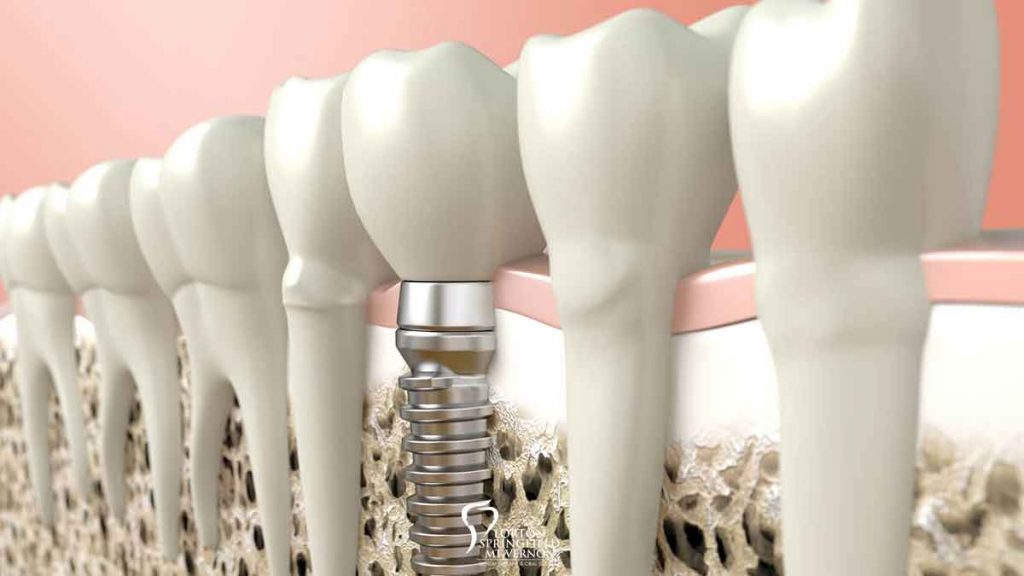Compared to traditional restorations, dental implants offer a lifelong solution for replacing any number of missing teeth. Valued as a highly versatile restorative option, much of the long-term success associated with dental implants derives from how this treatment interacts with other parts of patients’ smiles.
The Problem with Traditional Restorations
Natural teeth roots serve as stimulation for the jaw bone, ensuring stable dental function. When a tooth is lost, the bone also loses its necessary point of stimulation. While conventional restoration options such as bridges, partials, and dentures may be effective for temporarily treating tooth loss, these prosthetics sit above the gum line and do not interact with the jaw bone. Over time, the lack of jaw bone stimulation caused by general tooth loss and compounded by the restoration can cause bone deterioration. Known as resorption, this subsequent bone loss weakens the overall strength of the dentition and can trigger additional tooth loss.
Creating an Implant Support System
During implant placement, a titanium screw is placed directly into the jaw bone, mimicking the stimulation provided by the natural tooth. As a result, the bone begins to form around the implant, effectively incorporating the substitute root. Known as the process of osseointegration, this naturally-occurring process is directly tied to the success of the implant as a whole for several reasons:
- Prevents Resorption: Dental implants are designed to interact with the bone just like natural teeth do. By using an implant, rather than a bridge to replace a missing tooth, the bone can be comprehensively stimulated, thus preventing resorption and additional tooth loss.
- Stabilizes Future Restorations: Whether you’re receiving a single crown or using several implants to support a full-arch restoration, successful osseointegration prevents the need for total implant replacement in the future. Additionally, osseointegration helps to preserve dental function, allowing patients to enjoy lifelike teeth replacement.
- Preserve Facial Structure: Bone resorption can also trigger changes in facial structure, leading to the premature aging and facial collapse. By stimulating osseointegration with dental implants, patients are able to preserve facial aesthetics.
At Lorton-Springfield Dental Implants & Oral Surgery, our team is dedicated to helping patients achieve and maintain their smiles through dental implants and implant-supported dentures. For more information about this service, contact our Northern Virginia oral surgeon today.

